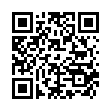|
This article is cited in 3 scientific papers (total in 3 papers)
Methods of Information Processing and Management
Differential ranging method of locating satellite communication system earth stations using repeater on an unmanned aerial vehicle
K. L. Ovcharenko, I. Yu. Eremeev, K. V. Sazonov, S. S. Semenjuk, A. N. Abakumov
Mozhaisky Military Space Academy
Abstract:
The article presents the differential ranging method of locating modern earth stations with narrow radiation patterns. Earth station position data is proposed to be calculated using maximum-likelihood procedure system solution from three differential equations using one of numerical methods. In this case supplementary assessment parameter of location, calculated by measuring a mutual signal delay of an earth station, relayed through a spacecraft on geostationary orbit and a mobile repeater on the unmanned aerial vehicle, can improve the accuracy of coordinate estimation earth station.
For the developed method the analytical expressions of potential accuracy of calculation of coordinates of the earth station on the basis of the Cramer–Rao lower bound are developed.
To measure the positioning accuracy of located emitters it is suggested to use the errors ellipsoid corresponding to the provision of a source of a radio emission in space.
The analysis of standard routes of the movement of a repeater on the unmanned aerial vehicle is carried out and the conclusion is drawn that the best accuracy and the shortest route simultaneously are achieved, if the unmanned aerial vehicle follows a circular trajectory along the control area.
Calculation of potential accuracy of positioning of the terrestrial station for the area of 50 by 50 km is executed.It is shown that the error of the estimates, received as a result of statistical tests, doesn’t surpass the size of a big half shaft of the error ellipsoid calculated with application of analytical expressions.
The application of the developed method is possible in the implementation of the software of electronic control systems to counteract illegitimate use of frequency resource of space vehicles-satellite repeaters communication system.
Keywords:
position location, satellite communications systems, earth station, unmanned aerial vehicle, repeater spacecraft, differential ranging method, method of maximum likelihood.
Received: 20.06.2018
Citation:
K. L. Ovcharenko, I. Yu. Eremeev, K. V. Sazonov, S. S. Semenjuk, A. N. Abakumov, “Differential ranging method of locating satellite communication system earth stations using repeater on an unmanned aerial vehicle”, Tr. SPIIRAN, 18:1 (2019), 176–201
Linking options:
https://www.mathnet.ru/eng/trspy1043 https://www.mathnet.ru/eng/trspy/v18/i1/p176
|

|




 Contact us:
Contact us: Terms of Use
Terms of Use
 Registration to the website
Registration to the website Logotypes
Logotypes








 Citation in format
Citation in format 
